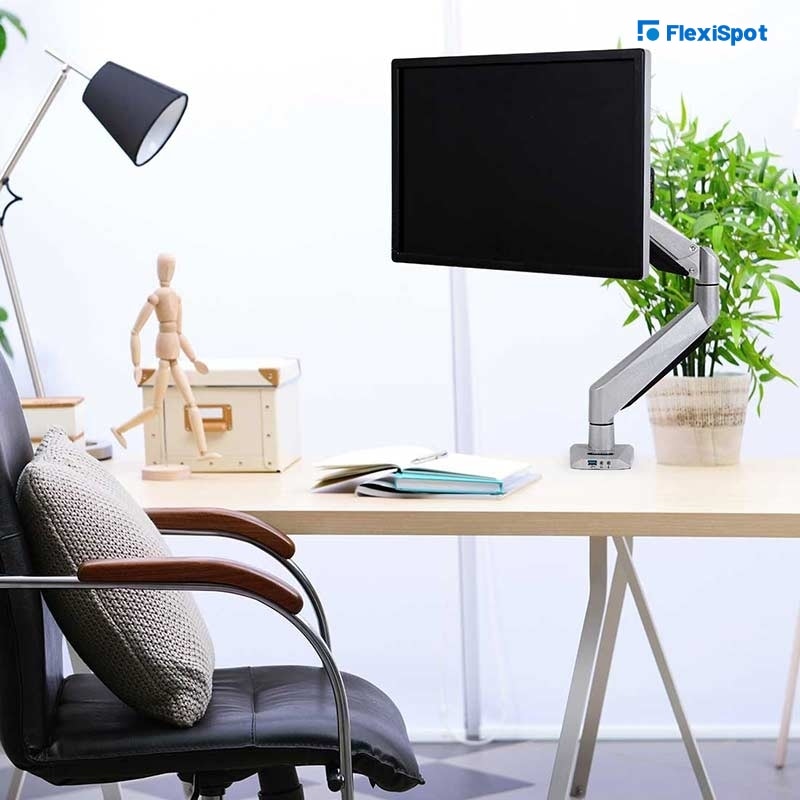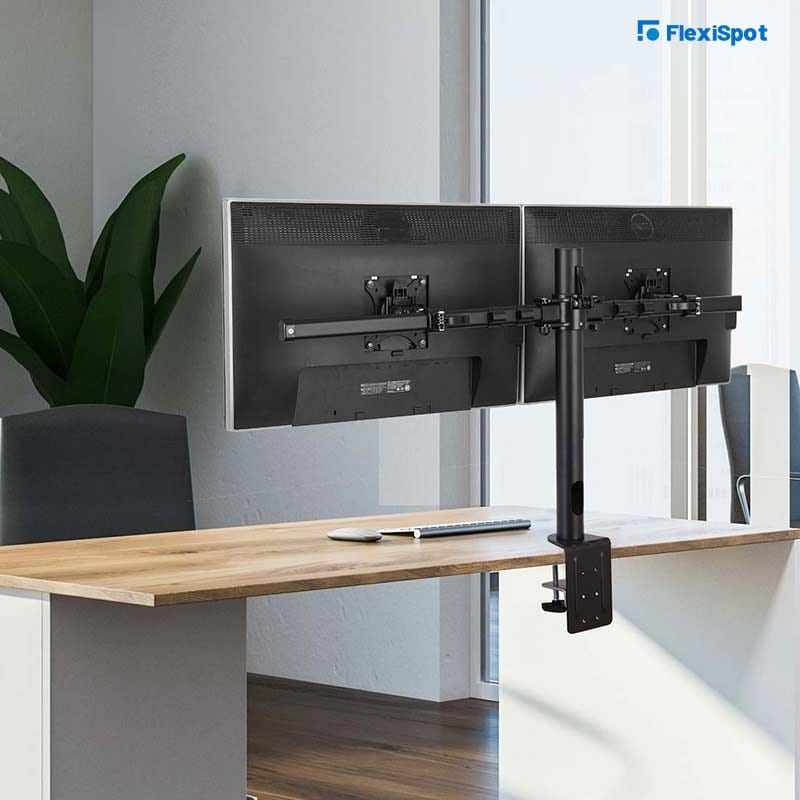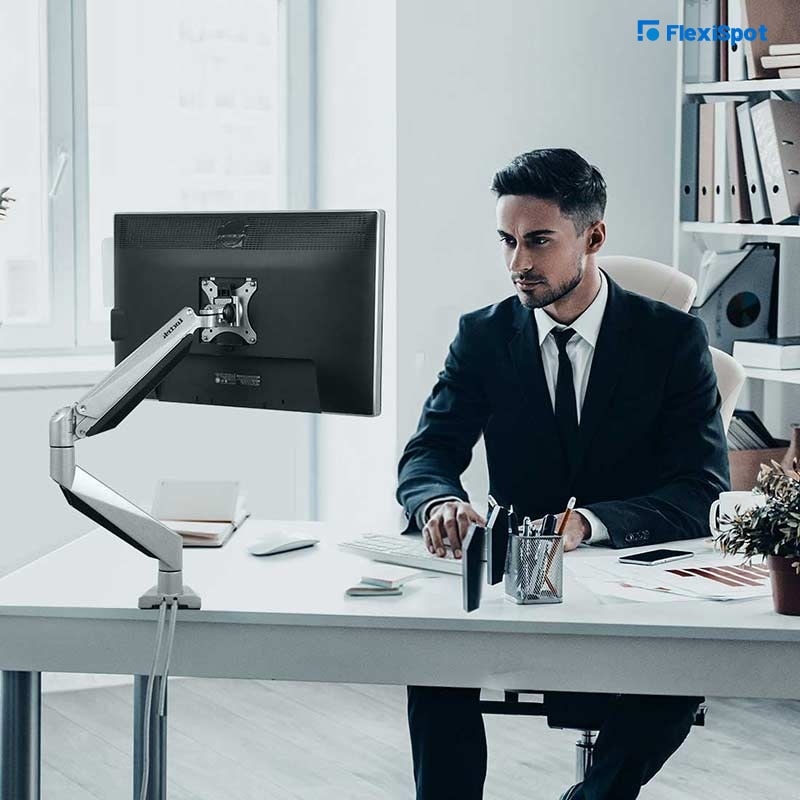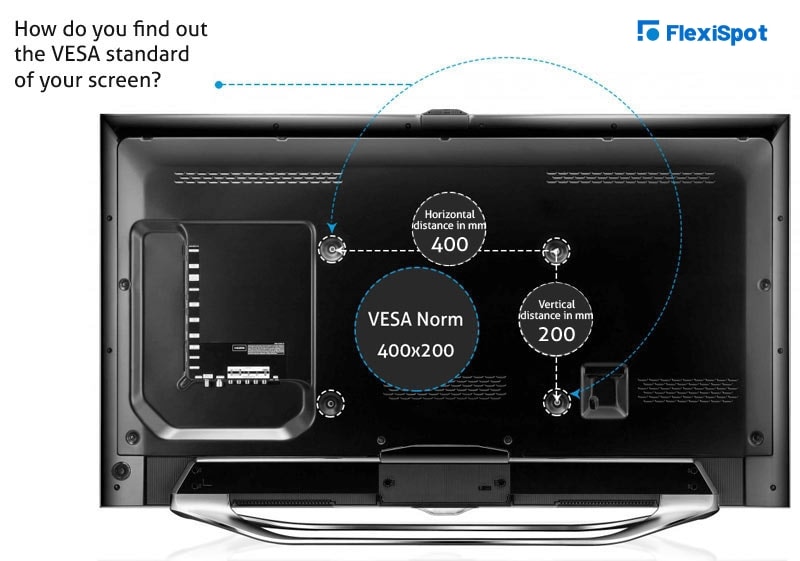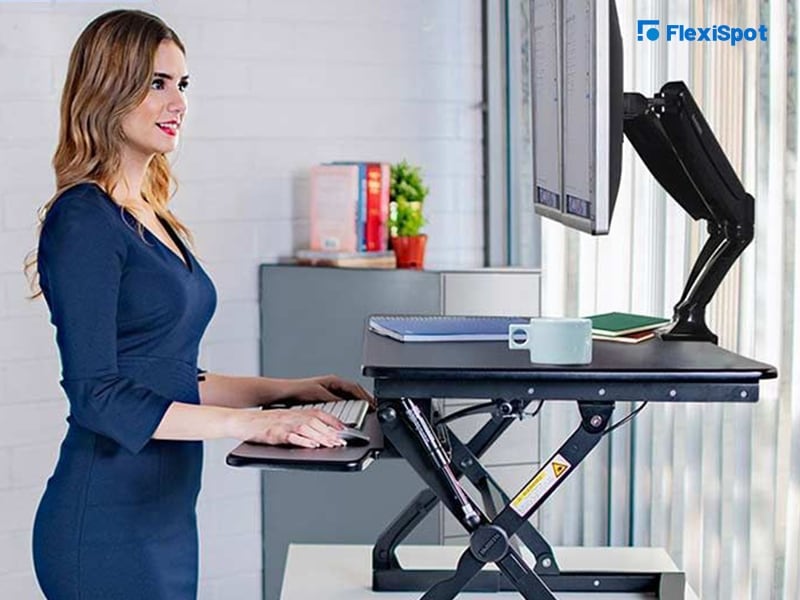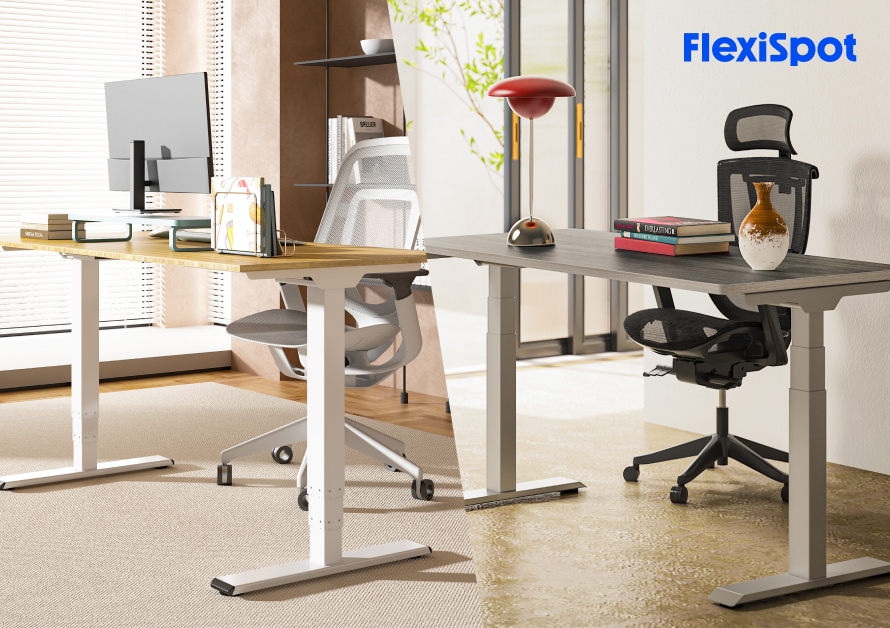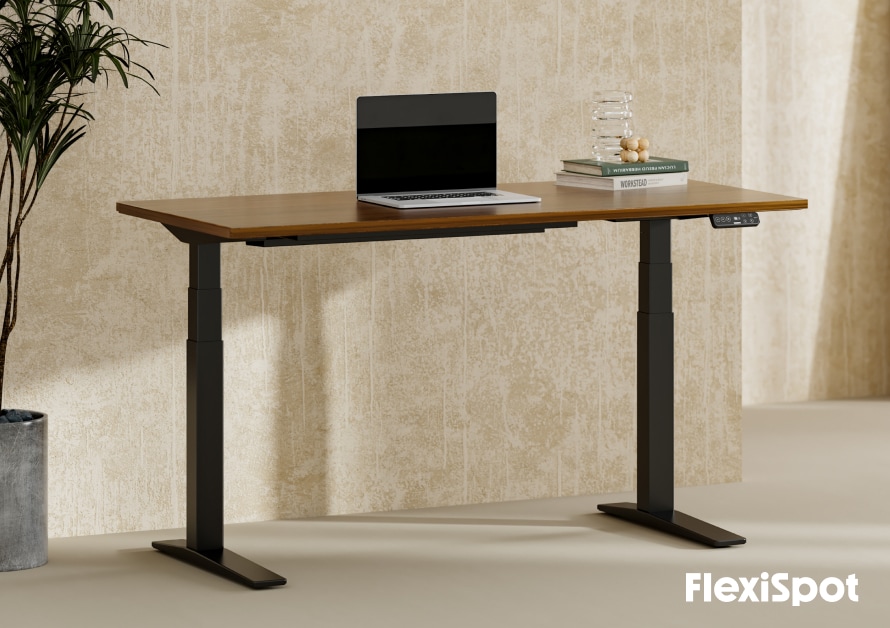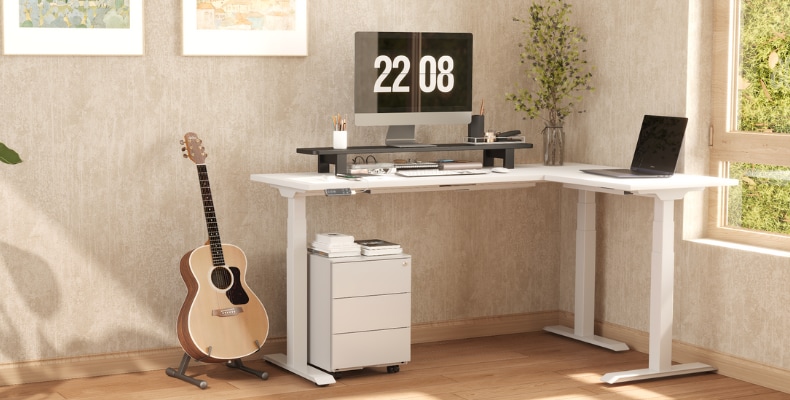A monitor arm stand is a mechanical-looking robotic arm that you can attach to your wall, desk, or ceiling to raise your monitor to the desired height level. Whether you stand or sit at your desk all day or do a mixture of both, you can easily adjust the monitor stand according to your working style.
This article will discuss the common types of monitor arms. We will also share the benefits of using monitor arms and how you can adjust them for optimum usage. Let’s get started.
Types of Monitor Arm Stands
1. Single Monitor Arm
Do you have a single screen on your desk? A single monitor arm is perfect for you! However, the bigger question is whether you should get a dynamic monitor arm or a post-mounted monitor arm. To decide, you must think about where you'll use your monitor and what for.
If you are on a tight budget, we suggest getting a post-mounted monitor arm stand since it tends to be cheaper for single monitors. But, if you work in an agile environment, you’ll probably have to adjust your screen often or add more screens in the future. Hence, a dynamic monitor arm stand would be more suitable.
2. Dual Monitor Arm
The more information you are expected to work on, the greater the number of screens you will need to view that information. It is now standard practice for many people to work with two screens. While this will increase your immediate productivity, it will provide a whole new set of ergonomic challenges.
If your job entails working with two screens, consider purchasing a Dual Monitor Mount from FlexiSpot!
5 Reasons You Need a Monitor Arm for Your Desk
How can a monitor arm stand to help you work more comfortably? Let’s find out.
Here’s why five reasons you need to monitor arms for your workspace:
1. To Find and Maintain an Ergonomic and Comfortable Posture.
Different tasks require working in various positions. For example, when you read, you might want to sit back, but you might want to lean in when you write.
With a monitor arm, it is easy to keep the computer screen at arm's length and adjust it to your eye level – regardless of the task you’re doing. If you raise your monitor to the ideal ergonomic height, you will be able to find and maintain your most comfortable working posture. When your posture is perfect, it will relieve the strain through your back and upper body, formerly caused by leaning awkwardly or hunching over your desk to view the screen.
With a monitor arm, you can also adjust your monitor's height, depth, and angle. Doing so will help you create the ideal setup that works perfectly for your body and enables you to complete your tasks easily.
2. To Eliminate Eye Strain.
Computer eye strain, also called digital eye strain or computer vision syndrome, is a condition that causes your eyes to tire out. If you've had a computer job for a long time, you probably know that computer screens can cause tire out your eyes by the end of the day. If you do not make ergonomic adjustments, you might experience strain, dryness, fatigue, and even blurred vision.
Monitor arm stands help to eliminate eye strains and ailments by enabling you to position your monitor at the optimal viewing position, angle height, and distance. Doing so will ensure you don’t strain your eyes while you work.
3. To Declutter and Organize Your Desk.
Since monitor arms attach to the back of your desk, wall, or ceiling above, they clear a vast empty area on your desk where your monitor previously used to sit. Having this extra workspace is an incredible win-win! It is an absolute game-changer, especially for those who love having a flat surface in front of them to place items or do simple tasks like writing in a notebook.
Some companies also create a variety of monitor arm stands with built-in compartments and drawers for extra storage. You can declutter your desk and keep things well-organized.
4. To Increase Your Productivity.
Monitor arms for standing desks allow you to have total command over the visual display of your work. There’s a whole world of possibilities regarding how you want to set up your computer screen (or screens) for a comfortable and natural working experience.
Whether you choose to display your screens side-by-side, one screen on top of the other, or three monitors lined up horizontally for a panoramic experience, you will notice an increase in your productivity.
5. To Collaborate More Easily.
Since a monitor arm stand allows you to shift your screen easily, you can share your work with your coworkers! If collaboration is important to you, make sure you opt for a monitor arm model that offers at least 180° horizontal rotation and is easy to swivel from side to side. The FlexiSpot Intelligent Monitor Arm with Docking Station is perfect for collaboration purposes.
Image Source: Vesa Standard
Setting Up a Monitor Arm
Installing a monitor arm is easy if you know what to look out for. Here’s how you can do it just three simple steps:
1. Check the VESA Dimensions.
The first thing you should do is check your monitor’s VESA dimensions. The VESA dimensions refer to the distance between the screw holes. Most monitors come with a monitor base but not an arm. Luckily, a manufacturer always indicates the VESA dimensions of the product, so you can easily choose the correct arm if the need arises.
2. Attach the Desk Clamp or Wall Mount.
Next, you need to decide whether to install your arm on your desk or the wall behind it.
If you want to attach the monitor arm to your desk, you need to buy a desk clamp and assemble it. Place the clamp at the edge of your desk and fasten it by tightening the screws or bolts included with the package. Ensure the clamp is secure, then attach the monitor arm to it.
If you want to mount your monitor arm on a wall, you'll need a wall mount. Before you begin, measure how high you want your screen to be. Using a tape measure or a ruler, mark the top and bottom of the mounting plate, then mark the screw holes on the wall. Next, drill holes in the places you’ve marked according to the same dimensions as the included plugs. After drilling the holes, carefully place the plugs into the wall using a hammer. Lastly, screw on the mounting plate using a screwdriver.
3. Attach the VESA Plate.
Some manufacturers provide a VESA plate separately with a monitor. You need to attach it to the back of your monitor before you begin, so it is easier for you to mount your monitor. Here’s how you can secure your VESA plate:
Place your monitor upside down and position the VESA plate on top.
Match the holes in the plate with the screw holes in the monitor.
Attach the plate with the screws and bolts included. Use a manual screwdriver for this purpose.
Attach your monitor with the VESA plate to your monitor arm stand.
Secure the monitor with the arm using the included screws and bolts.
4 Tips on Adjusting Your Monitor Arm
1. Place at Eye Level.
When you adjust your monitor arm, ensure that the top one-third portion of your screen is always at eye level. This is important because it reduces eye and neck strain when you look straight ahead. In addition, it ensures that your eyes are a little lowered while reading off the monitor screen.
2. Center Your Screen.
Ensure your monitor is always centered right in front of you. Using a monitor arm will ensure that you don’t force or jut your neck in an uncomfortable position to view your computer screen.
3. Ensure Your Monitor Is at an Arm’s Length from You.
A monitor's most comfortable viewing distance is an arm’s length from the face. You won't have to tilt your neck backward or crane it forwards to read off the screen comfortably. Keep this in mind when installing monitor arms for standing desks.
4. Tilt Your Monitor at an Angle to Avoid Glare or Reflection.
Make sure you do not place a direct light source right behind your monitor screen, as this can cause eye strain. Bright light behind your seat will cast a reflection on the screen, also leading to eye strain. You must always position your monitor at an angle to a light source that provides sufficient ambient light. This will ensure you do not experience eye strain or exhaustion. Just tilt your screen till it stops casting a reflection or glare.
Final Words
By using a monitor arm stand, you will succeed at creating a comfortable workspace at home or in your office. You can make the most of your monitor by using a monitor arm from FlexiSpot that is easily adjustable. Buying a high-quality monitor arm can prove worth your money if you know how to adjust it based on your posture and body’s positioning.


